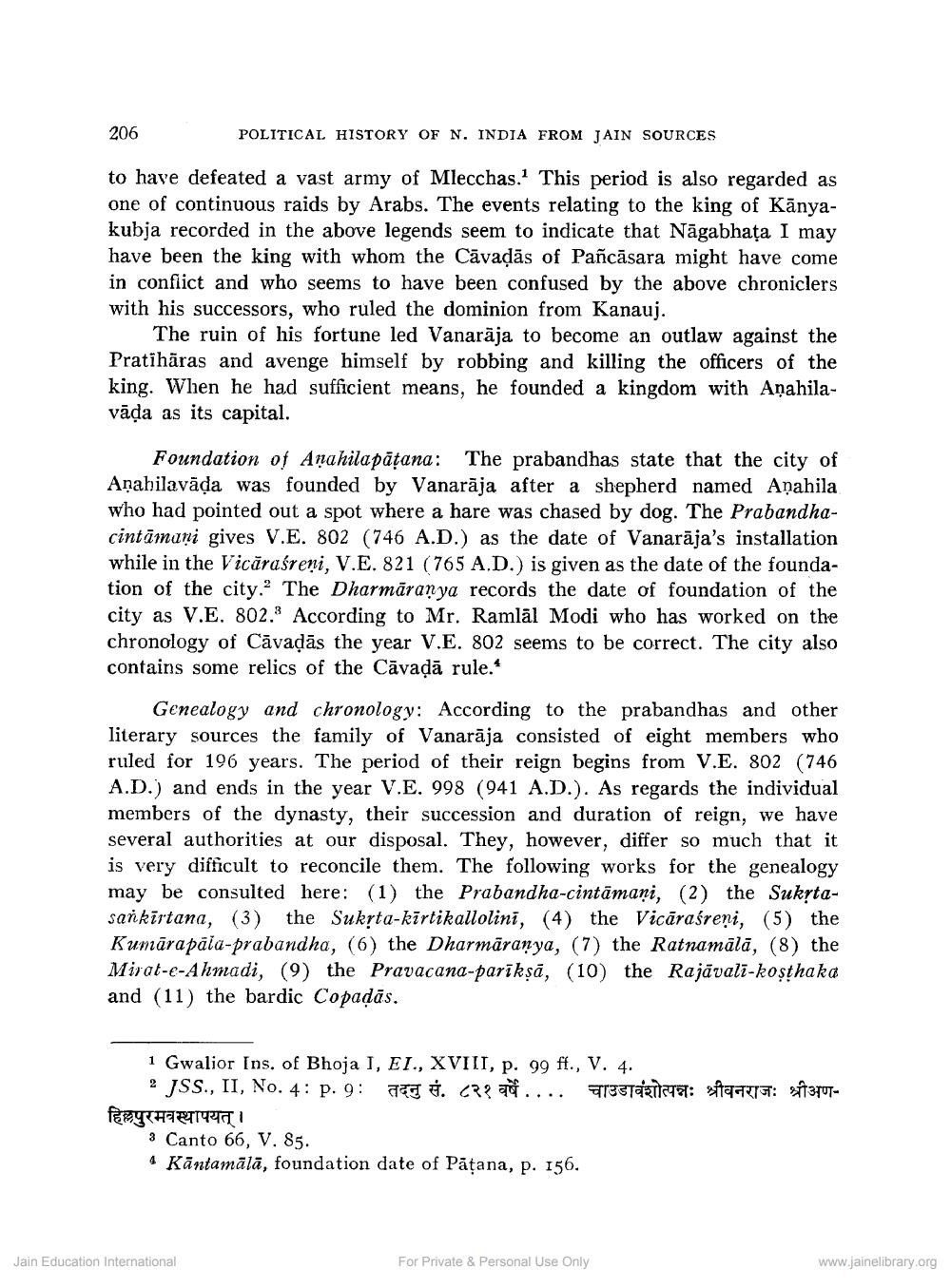________________
206
POLITICAL HISTORY OF N. INDIA FROM JAIN SOURCES
to have defeated a vast army of Mlecchas. This period is also regarded as one of continuous raids by Arabs. The events relating to the king of Kānyakubja recorded in the above legends seem to indicate that Nāgabhața I may have been the king with whom the Cāvadās of Pañcāsara might have come in conflict and who seems to have been confused by the above chroniclers with his successors, who ruled the dominion from Kanauj.
The ruin of his fortune led Vanarāja to become an outlaw against the Pratihäras and avenge himself by robbing and killing the officers of the king. When he had sufficient means, he founded a kingdom with Anahilavāļa as its capital.
Foundation of Anahilapātana: The prabandhas state that the city of Anabilavāda was founded by Vanarāja after a shepherd named Anahila who had pointed out a spot where a hare was chased by dog. The Prabandhacintāmuni gives V.E. 802 (746 A.D.) as the date of Vanarāja's installation while in the Vicăraśreni, V.E. 821 ( 765 A.D.) is given as the date of the foundation of the city. The Dharmāran ya records the date of foundation of the city as V.E. 802. According to Mr. Ramlal Modi who has worked on the chronology of Cāvaļās the year V.E. 802 seems to be correct. The city also contains some relics of the Cāvadā rule.*
Genealogy and chronology: According to the prabandhas and other literary sources the family of Vanarāja consisted of eight members who ruled for 196 years. The period of their reign begins from V.E. 802 (746 A.D.) and ends in the year V.E. 998 (941 A.D.). As regards the individual members of the dynasty, their succession and duration of reign, we have several authorities at our disposal. They, however, differ so much that it is very difficult to reconcile them. The following works for the genealogy may be consulted here: (1) the Prabandha-cintāmani, (2) the Sukrtasankirtana, (3) the Sukrta-kārtikallolini, (4) the Vicāraśreņi, (5) the Kumārapāla-prabandha, (6) the Dharmāranya, (7) the Ratnamālā, (8) the Mirat-e-Ahmadi, (9) the Pravacana-parīksā, (10) the Rajāvali-koșthaka and (11) the bardic Copadās.
1 Gwalior Ins. of Bhoja I, EI., XVIII, p. 99 ff., V. 4.
2 JSS., II, No. 4: p. 9: T. 68390.... STARTTT: itaas: t3rutहिल्लपुरमवस्थापयत्।
3 Canto 66, V. 85. 4 Kāntamālā, foundation date of Pāțana, p. 156.
Jain Education International
For Private & Personal Use Only
www.jainelibrary.org




